2017
ZEN AND THE ART OF THE JOURNEY
The MFA graduate program culminates with an MFA thesis exhibition. I will devote the main part of this semester to the written portion. Because Fine Art is written about, criticized, and discussed, it is important that we understand our artistic position and how it is informed by language. We begin our thesis by stating our perspective as an artist. The faculty urges us to take a position in the world, nurture that position, and clarify that position through language. We need to further define our position through historic precedent and then put them in context based on current events, history, and academic discourse. I will also include the methodology, avenues of production, and analysis of my conceptual work.
I will present this written component and the oral defense at the same time as the thesis exhibition in October.
THE ABSTRACT
The works in this exhibition represent the transdisciplinary research and practices used to explore humanitarian concerns with stress and suffering. It is a Buddhist principle that all humans suffer. And it is the inner journey that allows the guidance out of suffering and towards freedom. For me, the recognition of suffering was there since infancy. I have spent a lifetime searching for answers through the philosophy of Zen, the study of neuroscience, the arts (both liberal and fine), the practice of meditation, and the psychological process of mindfulness.
The attention to the present moment allows me to find that one place where suffering does not exist. It is through the moment to moment life, the journey, that I have found freedom, creativity, and happiness. Mindfulness’ gift is trust of self which in turn gives permission to create art that is both self-regulated and straightforward.
This exhibition replicates my journey; the discarding of life as I knew it, the power of nature as teacher, the study, the research, the meditations and inner journeys, and finally, creation without stress and suffering.

“THE DISCARDING OF LIFE AS I KNEW IT”
This first section of the journey takes place at the entrance. The five bindles and antique case represent my life’s memories, ideas, traumas, and beliefs that my ego insists upon carrying. By dropping them, I can begin my journey without suffering from fears, judgements, the past and the future.
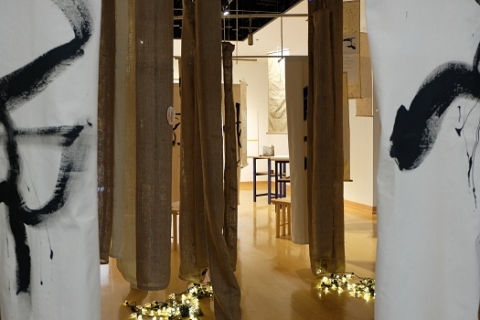
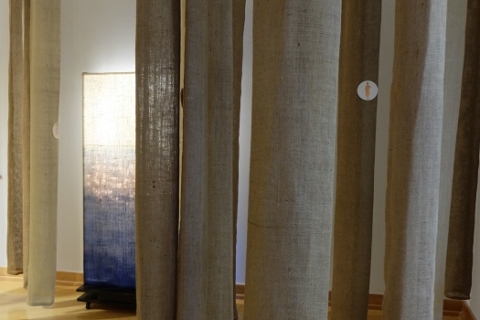
“THE POWER OF NATURE AS TEACHER”
Island life is an effervescent place, abundant with opportunities for sensory interactions and attitude changes. Long hikes through the maritime forests showed me that my problems were minuscule or non-existent. Hundred-year-old oak trees dwarfed not only my size but put my viewpoint in perspective. John Muir explains this phenomenon, “The clearest way into the universe is through a forest wilderness.” Spring tides rose so fast they divided hiking trails in two and wading from one side to the other became mandatory. Changeability is the perennial principle of nature—nothing remains static.
Henry David Thoreau woke every morning, hiking through the woodlands as if seeing it for the first time. He recites through Walden, “I went to the woods because I wished to live deliberately, to front only the essential facts of life, and see if I could not learn what it had to teach, and not, when I came to die, discover that I had not lived.” As we learn to surrender to the Absolute in this harmony, we become poets, painters, and musicians.
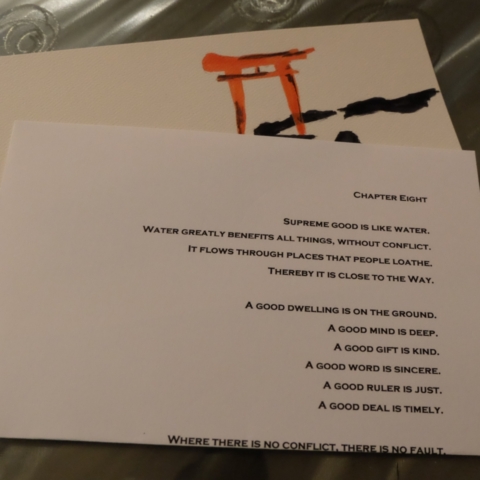
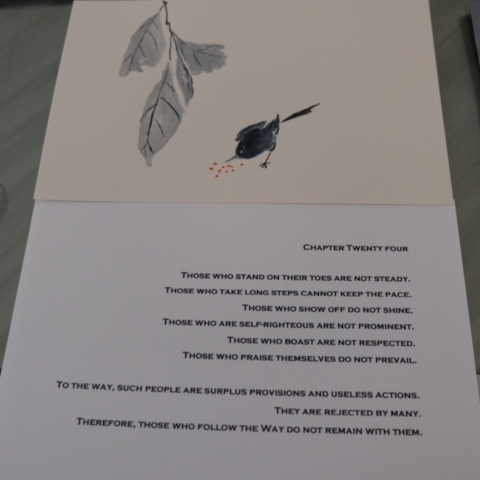
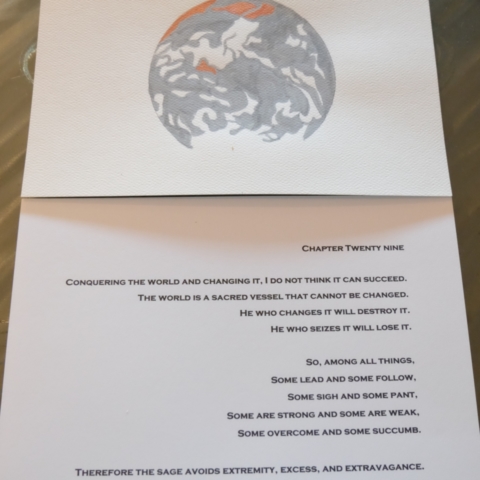
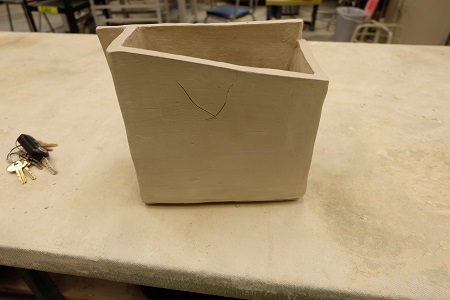
“THE STUDY, THE RESEARCH”
While studying and researching for the thesis, I studied the Tao Te Ching and interpreted it by illustrating each chapter. The Tao Te Ching is the oldest literature known to man and credited to Laozi. The oldest excavated part dates to the late 4th century BC. It is a fundamental text for both philosophical and religious Taoism. Translated, the name means the classic of the Way’s virtue. Scholars divided the text into two sections, comprising 81 chapters total. Chapter 1-37 is the Tao Ching and chapters 38-81 is the Te Ching.
Scholars have understood each chapter in various ways. I have read most of these understandings, pondered the interpretations, and drawn, with ink and brush, my interpretation as illustration. A limited pallet of neutral grays was punched with a coral color to illuminate the Tao and the Te. I selected the color coral, as they say it has emotional healing qualities.
I slab built my very first clay vessel to hold the 81 chapters. The chapters of the Tao Te Ching were also converted into scrolls as metaphors for the “forest” of information as found in universities or the internet itself. I also made two benches for sitting and contemplation.
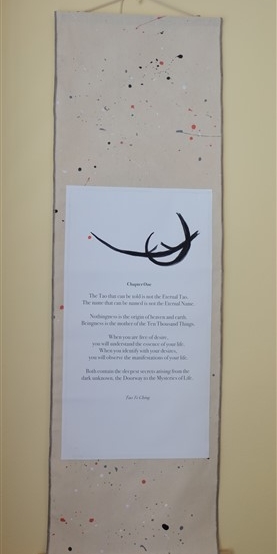
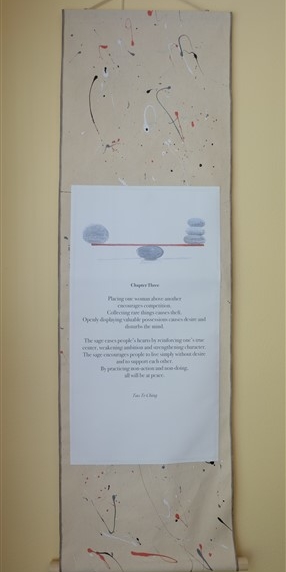
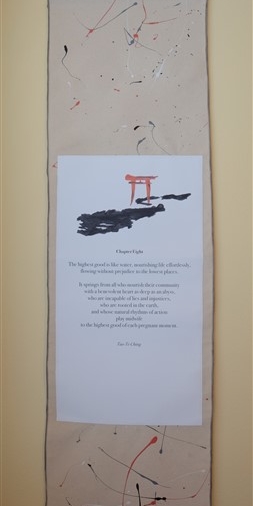
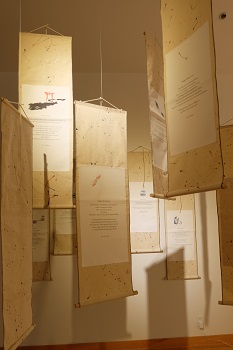

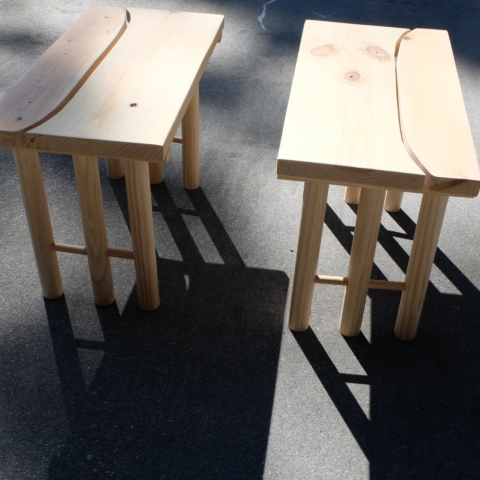
“THE MEDITATIONS AND INNER JOURNEYS”
Contemporary artists, those other than commercial artists and academicians, reflect that they know themselves through their work. E. E. Cummings defined this type of artist as “The Agony of the Artist (with a capital A)”. The article originally appeared in Vanity Fair in 1927 and was one of the forty-nine essays in the now unavailable book entitled A Miscellany Revised. As Cummings defines it, “It is Art because it is alive. It proves that, if you and I are to create at all, we must create with today and let all the art schools and Medicis in the universe go hang themselves with yesterday’s rope. It teaches us that we have made a profound error in trying to learn Art, since whatever Art stands for is whatever cannot be learned. Indeed, the Artist is no other than he who unlearns what he has learned in order to know himself; and the agony of the Artist, far from being the result of the world’s failure to discover and appreciate him, arises from his own personal struggle to discover, to appreciate and finally to express himself.”
I created these three stations to indicate these inner journeys. The meditation station with its infinity well and prayer beads. The contemplation stations with its vessel of wisdom from the Tao Te Ching. And the mandala station where the act of making art takes the artist on her deepest journeys.
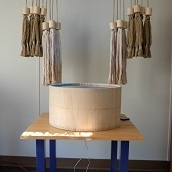
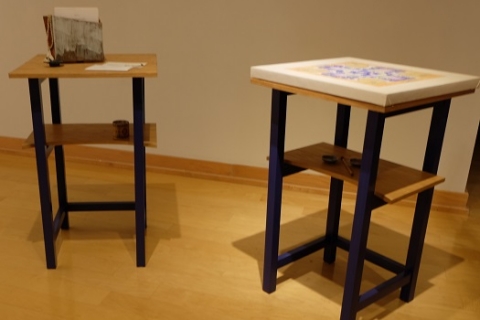
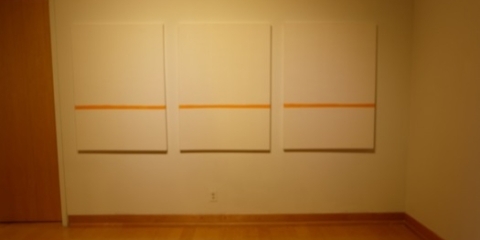
“AND FINALLY, CREATION WITHOUT STRESS AND SUFFERING”



